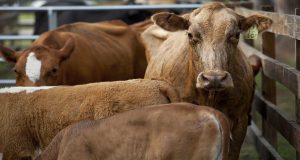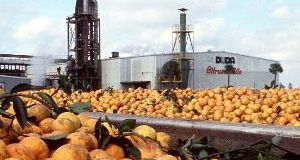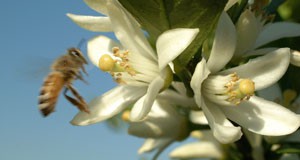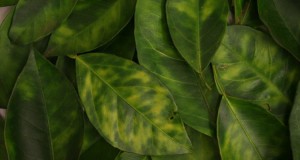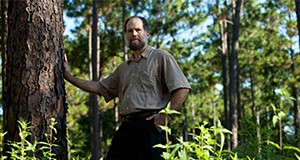US cattle markets have experienced a roller coaster ride over the last several years, with cattle prices have been supported by a declining US beef cow herd and strong beef demand. But a turning point in the US cattle industry occurred at the beginning of 2015. This 7-page fact sheet witten by Chris Prevatt and published by the UF Department of Food and Resource Economics includes highlights of the US cattle market’s cycle since 2004 and the estimated outlook for 2016, a brief analysis of the supply situation, food and forage conditions, demand and trade, competing meats, and the 2016 beef price outlook.
http://edis.ifas.ufl.edu/fe987
Tag: Food and Resource Economics Department
2014/15 Average Packing Charges for Florida Fresh Citrus
A survey of Florida fresh citrus packers was conducted in April 2015 to collect data on their packing charges during the 2014/15 season. A total of sixteen packinghouses participated in the survey, seven from the Interior region and nine from the Indian River region. The average of their responses was computed to obtain the estimates presented in this 4-page fact sheet was written by Ariel Singerman, and published by the UF Department of Food and Resource Economics, March 2016.
http://edis.ifas.ufl.edu/fe989
Consumers' Response to "Neonic-Free" and Other Insect Pollinator Promotions on Ornamental Plants
Pollinator insects are essential to world food crop production, the economy, and the environment. Neonicotinoid (neonic) insecticides are facing intense backlash from environmental groups because the systemic protection they provide throughout the plant, including the pollen and nectar, may be injuring pollinator insects and causing their population decline. But many nursery and greenhouse growers use neonic-based pesticide control measures because they are effective, inexpensive, and cause less environmental damage than other insecticides. The increased publicity may influence consumer demand and preferences but very few studies have investigated consumer responses to neonic-free labels, and evidence suggests that many consumers have little knowledge or awareness of the issue. This 3-page fact sheet describes the results of a the study investigating how consumers’ awareness of neonic insecticides influenced their preferences and purchasing behavior for plants and exploring the marketing potential of using alternate pollinator promotions (besides neonic-free) in garden center retail outlets. Written by Hayk Khachatryan and published by the Food and Resource Economics Department.
http://edis.ifas.ufl.edu/fe991
Consumer Perceptions of Lawn Fertilizer Brands
Widespread urbanization in the United States has increased the number of lawns. A healthy lawn provides many benefits, including urban heat dissipation, water quality protection, erosion control, carbon sequestration, community safety, aesthetics, and property value growth. Many homeowners maintain their healthy lawns by applying fertilizers throughout the growing season, but excess fertilizer runoff and leaching have received much attention recently because of waterway pollution and algae blooms, leading many states to place restrictions on what chemicals can be used in lawn fertilizers.
Consumers’ increased environmental awareness creates a niche opportunity for the fertilizer industry to promote environmentally friendly lawn fertilizers, but in order to effectively exploit it, industry stakeholders must understand consumer purchasing behavior before expending labor, time, and money creating products for sale. The following 3-page report written by Hayk Khachatryan, Alicia Rihn, and Michael Dukes and published by the Food and Resource Economics Department covers research methodology and the existing brand awareness and selection of consumers in the lawn fertilizer industry. It also discusses homeowners’ preferences for certain fertilizer attributes. Consumer awareness, selection, and attribute preferences indicate existing behavior, and understanding existing behavior assists in the development of effective marketing programs, promotional strategies, and policies.
http://edis.ifas.ufl.edu/fe990
Cost of Production for Processed Oranges in Central Florida (Ridge), 2014/15
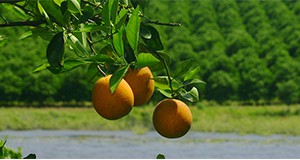
UF/IFAS researchers collected data from five growers to estimate the cost of production per acre for processed oranges in central Florida during 2014/15. The cost estimates in this 4-page fact sheet written by Ariel Singerman and published by the Food and Resource Economics Department do not represent any individual operation. Instead, their purpose is to serve as a benchmark for the Florida citrus industry. Typical users of these estimates include growers, consultants, property appraisers, and researchers.
http://edis.ifas.ufl.edu/fe985
Cost of Production for Fresh Grapefruit in East Florida (Indian River), 2014/15
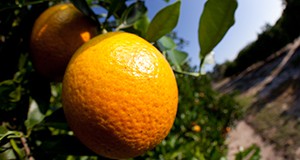
This 4-page article written by Ariel Singerman and published by the Food and Resource Economics Department presents the cost of production per acre for growing fresh grapefruit in the Indian River region during 2014/15, based on a survey of growers conducted at the Indian River Citrus League production committee meeting in March 2015. The cost estimates do not represent any individual operation; rather, their purpose is to serve as a benchmark for the industry. Typical users of these estimates include growers, consultants, property appraisers, and researchers.
edis.ifas.ufl.edu/FE984
Florida Consumer Preferences for Fruit-Producing Plant Attributes
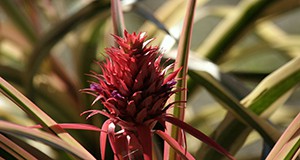
This 4-page report from the Food and Resource Economics Department and the UF/IFAS Mid-Florida Research and Education Center compares the effects of plant type, price, production method, and origin attributes on consumer preferences for fruit-producing plants. Authors Hayk Khachatryan and Alicia Rihn present the results of a survey of Florida plant consumers conducted in June and July of 2014 to rate their likelihood of purchasing plants with various attributes, reporting that production methods do indeed directly influence consumers’ preferences for fruit-producing plants. The article describes the implications for the environmental horticulture industry and provides suggestions for growers and retailers to more effectively market their plants.
http://edis.ifas.ufl.edu/fe981
Impact of Citrus Greening on Citrus Operations in Florida
Florida is the largest orange-producing state in the United States and the third largest orange producer in the world, but the Florida citrus industry and its position in the global citrus market are being jeopardized by a bacterial disease known as citrus greening or Huanglongbing (HLB). HLB hurts the vascular systems of citrus trees and prevents them from absorbing nutrients. The disease reduces yields, leads to smaller, lower-quality fruit, kills trees, and increases farmers’ production costs. First found in Florida in 2005, HLB has spread rapidly across the state.
As of January 2016, there is neither a cure nor an economically viable option for managing HLB-infected trees. Since HLB was first found in 2005, orange acreage and yield in Florida have decreased by 26% and 42%, respectively. Orange production dropped from 242 million to 104.6 million boxes in 2014. Even though the industry acknowledges that HLB has reached epidemic proportions across the state, estimates of the level of infection and its impact on citrus operations are scarce. This 4-page article written by Ariel Singerman and Pilar Useche and published by the Food and Resource Economics Department presents the first growers’-survey-based estimates of both the level of HLB infection in Florida and the impact of HLB on citrus operations in Florida.
http://edis.ifas.ufl.edu/fe983
Frost Protection Irrigation for Florida Peaches: Economic Considerations
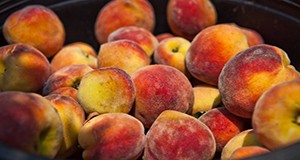
Peach production in Florida is increasing in importance, and the peach industry is growing rapidly in the state, where the early harvest and early market window allow the prices for Florida peaches to be high compared to those received by producers in the other southeastern states. Reduction in peach production costs would allow Florida peach producers to increase their net revenues. This 7-page fact sheet describes a strategy for limiting water use for frost protection of peach trees in the winter to reduce producers’ costs, protect lakes and streams, and reinforce the public image of farmers as innovators and environmental stewards. Written by Tori Bradley, Tatiana Borisova, and Mercy Olmstead and published by the Food and Resource Economics Department.
edis.ifas.ufl.edu/fe980
Conservation Reserve Program: Overview and Discussion
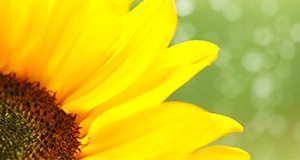
The Conservation Reserve Program, a governmental initiative with the goal of protecting the environment by retiring less productive but environmentally sensitive cropland from production, is by far the largest-scale, biggest-budgeted conservation program in the United States. The program has been a success, improving the land allocation of primary crop production and providing environmental benefits, but it is currently confronted with government budget cuts, and some farmers are reluctant to participate. This 5-page fact sheet written by Juhyun Oh and Zhengfei Guan and published by the Food and Resource Economics Department provides an overview of the Conservation Reserve Program and discusses relevant issues for Florida.
http://edis.ifas.ufl.edu/fe973
United States Biofuel Policies: Overview and Discussion

Governments at different levels in the United States have introduced various programs to promote alternative and renewable energies, reduce greenhouse gas emissions, and improve energy security. Some of these policy initiatives include mandates and tax credits to encourage the production of biofuels. As governmental efforts to promote renewable fuels as alternative sources of energy have evolved from subsidization to mandate, the production of biofuels has dramatically increased. The expansion of the mandate may contribute to reducing greenhouse gas emissions, but biofuels may be technically, economically, and environmentally inefficient. This 4-page fact sheet written by Zhengfei Guan and Juhyun Oh and published by the Food and Resource Economics Department reviews and discusses current US biofuel policies and explores potential outcomes.
http://edis.ifas.ufl.edu/fe974
2014/15 Picking, Roadsiding, and Hauling Charges for Florida Citrus
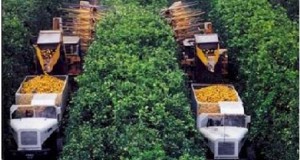
As Florida’s citrus industry confronts the impacts of Huanglongbing (HLB or citrus greening)–decreasing crop yields and production, lower quality fruit, and increasing cost of production–many growers are facing declining returns. A 2015 survey of twelve Florida citrus harvesters to collect data on harvesting charges during the 2014/15 season revealed that average picking and roadsiding charges for fresh fruit are in most cases lower than those for processed fruit, likely because of the impact of HLB. This 3-page fact sheet written by Ariel Singerman of UF/IFAS Citrus Research and Education Center and published by the Food and Resource Economics Department presents the results of the survey and provides a table summarizing the harvesting charges for citrus during the 2014/15 season with the average and the range of picking and roadsiding charges by variety and type of fruit (fresh versus processed), as well as the average hauling charges for all varieties by distance. The fact sheet will assist growers in the effort to compute the changes to their economic returns as the industry adapts to remain profitable.
http://edis.ifas.ufl.edu/fe977
What Is the Economic Benefit of a Citrus Health Management Area? A Case Study

A Citrus Health Management Area (CHMA) is a group of growers who work cooperatively to coordinate insecticide application timing and mode of action in order control the insect vector of citrus greening disease. CHMAs help prevent insect vectors from moving between groves and reduce the likelihood that insects will develop pesticide resistance. This 3-page fact sheet written by Ariel Singerman and Brandon Page and published by the Food and Resource Economics Department analyzes the case-study data on yields of Valencia oranges from blocks located in two different categories of CHMAs to find the impact of citrus greening disease on citrus yields and provide evidence on the effectiveness of best class CHMAs as a way to deal with the disease. The analysis provides evidence that CHMAs can enhance an individual grower’s profitability at a time when margins are becoming increasingly narrow.
edis.ifas.ufl.edu/fe982
Top Challenges Facing the Florida Strawberry Industry: Insights from a Comprehensive Industry Survey
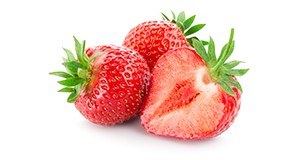
Florida is the largest supplier of winter strawberries in the United States and the second largest overall after California. The farm-gate value of Florida strawberries is approximately US$400 million and the total economic contribution of the industry is estimated at about US$1 billion. Even so, over the last few years, the Florida strawberry industry has faced many challenges. In 2012, Florida production was down by 20% compared to the previous year. The record level of imports of strawberries from Mexico deeply depressed the market, causing a market crash at the peak season of the Florida production. Decreased revenues coupled with increased production costs have caused significant losses to the Florida industry. In this three-page article, Zhengfei Guan, Feng Wu, and Alicia Whidden investigate Florida growers’ perceptions of various threats and challenges and discuss those threats that should be dealt with as high priority. Published by the UF Food and Resource Economics Department.
edis.ifas.ufl.edu/fe972
An Overview of the US and Mexico Strawberry Industries

The statistics of the Food and Agriculture Organization of the United Nations indicate that world production of strawberries has exceeded 4 million metric tons since 2007. With a total production of 1.4 million tons (3 billion pounds) in 2012, the United States is the largest producer among countries where statistical data are available, accounting for about 30% of the world supply. Production in Mexico increased from 140 thousand tons to 360 thousand tons, making Mexico the second-largest strawberry producer in the world. This four-page fact sheet written by Feng Wu, Zhengfei Guan, and Alicia Whidden and published by the UF Food and Resource Economics Department provides an overview of the US and Mexican strawberry industries, paying special attention to the trade relations between the two countries. (Photo credit: anna1311/istock/Thinkstock)
edis.ifas.ufl.edu/fe971
Cost of Production for Processed Oranges in Southwest Florida, 2014/15

UF/IFAS researchers collected data from twelve growers to estimate the cost of production per acre for processed oranges in southwest Florida during 2014/15. The cost estimates in this 4-page fact sheet written by Ariel Singerman and published by the Food and Resource Economics Department do not represent any individual operation. Instead, their purpose is to serve as a benchmark for the Florida citrus industry. Typical users of these estimates include growers, consultants, property appraisers, and researchers.
http://edis.ifas.ufl.edu/fe986
US Consumer Preferences for Home Lawn Fertilizers
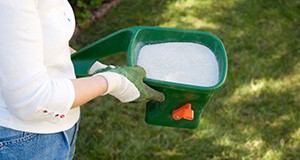
Consumer preferences for home lawn fertilizers are not always informed and do not always align with best practices. Understanding the disconnect will help turf industry educators better address consumers’ misperceptions about fertilizers, and help industry stakeholders design more appealing products and educate consumers effectively as they promote them. Knowing consumer preferences greatly reduces stakeholders’ risks and improves efficiency in determining future product and promotional strategies. This 4-page report discusses the findings of a 2013 survey of 1,066 US homeowners about their preferences and willingness-to-pay for various lawn fertilizer attributes. Written by Hayk Khachatryan, Alicia Rihn, and Michael Dukes and published by the Food and Resource Economics Department.
edis.ifas.ufl.edu/fe975
Florida Consumer Perception of the Fresh from Florida Campaign on Horticulture Plants

Consumer demand for local products is increasing all the time because of perceptions of superior quality and the idea that local products benefit personal health, the local community, and the environment. Many states have publicly funded marketing programs to promote the consumption of local products. In a new development in Florida, the Department of Agriculture and Consumer Services (FDACS) has partnered with the Florida Nursery, Growers, and Landscape Association to include horticulture plants in the state’s Fresh from Florida campaign for the first time. This 3-page report written by Hayk Khachatryan and Alicia Rihn and published by the Food and Resource Economics Department provides an overview of Florida consumer perceptions of the new Fresh from Florida campaign for horticultural plants. Growers, wholesalers, marketers, and retailers can use the tips inside to understand consumer perceptions and discover how best to use the promotional materials of the new program to reach consumers, reduce economic risks and improve their returns on investment.
http://edis.ifas.ufl.edu/fe976
Improving the Precision of Blueberry Frost Protection Irrigation
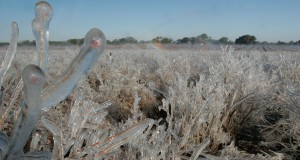
In Florida, early-ripening southern highbush blueberry cultivars allow growers to take advantage of high prices in the early market before other states can compete with higher volumes of berries sold at lower prices. That advantage comes with a vulnerability, however, because frosts can reduce gains. Florida growers rely on strategies like cold protection irrigation to reduce their risk of loss due to cold damage. This 9-page article by Tatiana Borisova, Tori Bradley, Mercy Olmstead, and Jeffrey Williamson describes a UF/IFAS study comparing precision cold protection irrigation to uniform cold protection irrigation to estimate the potential savings in diesel costs and water withdrawal volumes associated with the two practices and help protect Florida’s valuable and vulnerable blueberry harvest. Published by the Food and Resource Economics Department in November 2015.
http://edis.ifas.ufl.edu/fe979
Economic Contributions of Agriculture, Natural Resources, and Food Industries in Florida in 2013
About 1.52 million people worked full- or part-time in Florida’s agriculture, natural resources and food industries in 2013– an 8.7 percent increase in jobs over 2012.
Recognizing the significant impact agriculture, natural resources, and related food industries have on the economy of Florida is essential to informed public policy. UF/IFAS researchers used the Implan regional economic modeling system to estimate economic multipliers for over 500 different industry sectors and evaluate their economic contributions in 2013. This 5-page executive summary was written by Alan W. Hodges, Mohammad Rahmani, and Thomas J. Stevens and published by the Department of Food and Resource Economics, September 2015. (UF/IFAS File photo)
http://edis.ifas.ufl.edu/fe969
Related Resources:
Press release: http://news.ifas.ufl.edu/2015/09/floridas-agriculture-related-employment-up-8-7-percent/
Full report: http://fred.ifas.ufl.edu/pdf/FE969-FullReport.pdf
